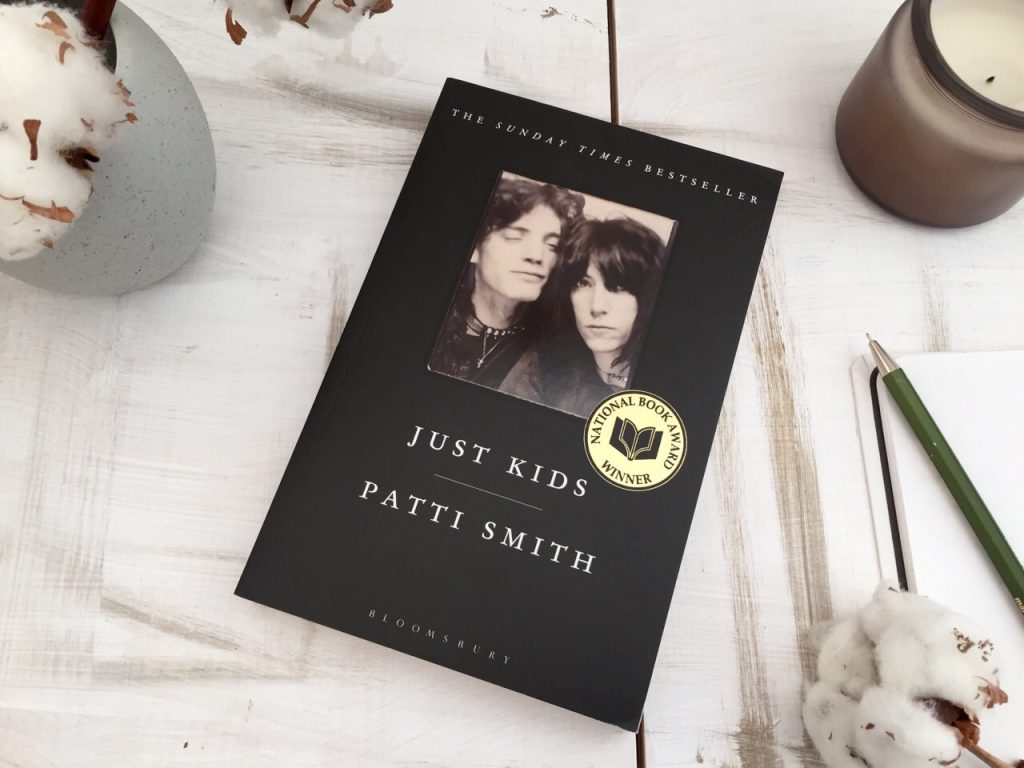Mirabella Miller ’23
Staff Writer
It’s surprisingly hard to read for fun: a practice that is supposed to be about leisure and learning becomes an afterthought when you are juggling schoolwork, extracurriculars, jobs and other activities. That’s why one of my goals for my leave of absence this semester has been to read all the books I’ve been meaning to read forever that I have not had the time to. In this monthly column, I’ll be highlighting some of my favorite books I’ve read in that month, and making the case for why you should read them too. Below are my picks for January along with types of people I’d most recommend each book to.
Just Kids by Patti Smith
Patti Smith’s 2010 memoir is a testament to both love and art in all their many forms and intersections. The book centers on Smith’s decades-long friendship and love affair with fellow artist Robert Mapplethorpe. Don’t worry if you are not familiar with Patti Smith and Robert Mapplethorpe’s work: Just Kids will grip you just the same. It traverses their individual and mutual escapades as young artists in New York City in the 1960s, full of fortunate encounters that help keep them afloat and publicize their work. The book is freewheeling and unapologetic, even when bordering on pretentious artist stereotypes, to the point that the stereotypes lose their meaning, and the reader is struck by Smith and Mapplethorpe’s overwhelming earnestness. Their story feels unrealistic at times because it’s hard to imagine encounters like running into Janis Joplin or Andy Warhol as happenstance, but that’s part of the magic. The perpetual optimism and innocence of two young artists as rendered by Smith hold deeper lessons for us all.
Recommended for: anyone who self-identifies as an “artist,” aux cord hoggers, water signs who were “born in the wrong generation,” notes app poem writers, and vintage leather jacket owners
The Tiger’s Wife by Tea Obreht
In her debut 2011 novel The Tiger’s Wife, Serbian-American writer Tea Obreht weaves a complex story of death and mythology that is a dense and worthwhile undertaking. Natalia, a medical school student from an unnamed Balkan country, is trying to understand the mysterious circumstances around her beloved grandfather’s death by revisiting stories he told her about his own childhood and his experience as a doctor in a war-torn country. She eventually hones in on two stories in particular, the story of the tiger’s wife and the deathless man. “Everything necessary to understand my grandfather lies between two stories: the story of the tiger’s wife, and the story of the deathless man,” Natalia says. “These stories run like secret rivers through all the other stories of his life. … One which I learned after his death, is the story of how my grandfather became a man; the other, which he told me, is of how he became a child again.” The novel expertly shows the enchanting destructive power of myths, and why an entire country may pivot toward them when reality is so heartbreaking it ceases to make sense.
Recommended for: superstitious people, vivid dreamers, family secret keepers, and anyone who went through a myth/folktale phase as a kid
Braiding Sweetgrass by Robin Wall Kimmerer
In this monumental combination of memoir and nature writing published in 2013, Indigenous botany scholar and professor Robin Wall Kimmerer envisions a society in which we have a deep connection to the earth. She lays the groundwork for a relationship grounded in Indigenous knowledge and supported by Western science, in which plants and animals are our greatest teachers. The book braids together Indigenous worldviews, Kimmerer’s experience in academia, and her life as a mother. Kimmerer’s writing is poetic and eloquent, her love for the world and belief in her message resounding clearly. Her description of the minutiae of the natural world is lyrical, with personification abound—almost like a love song. But she does not describe these small moments in nature just for the sake of description, and instead uses them to illustrate her broader claims about how the way we engage with nature has to change drastically to ensure a future for us on this planet. Throughout the book, Kimmerer shows how necessary it is to engage in a reciprocal relationship to the places in which we live, even if you are a settler in that place. Even if you do not feel especially connected with land or the natural world, she invites you to begin your journey towards a loving and reciprocal relationship, writing “The land knows you, even when you are lost.”
Recommended for: farmers market attendees, regular meditators, people who take spiders outside instead of killing them, and the person on the hike who identifies all the plants
Image Source: Classiq



